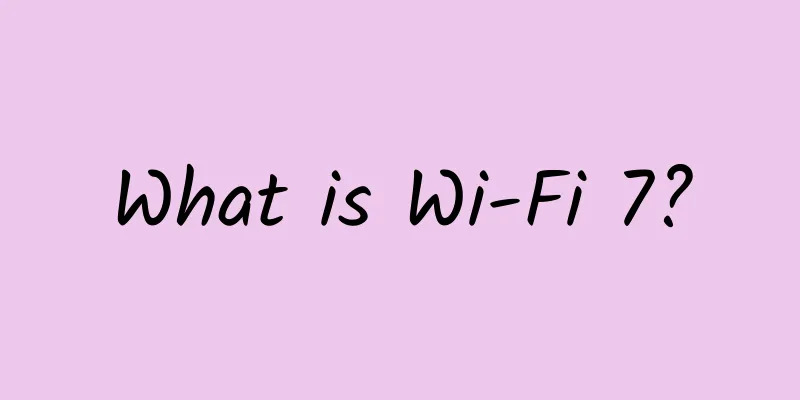2021: Connectivity disruptors

|
From 5G to Wi-Fi 6, connectivity is opening up new opportunities for industry to communicate and changing the way we receive information. As I like to say, the opportunities are truly endless. This can help us end poverty, inequality, water scarcity, hunger, and more. Let’s take a closer look at what’s happening in the vast connected world — the disruptors in this space — to reveal what’s in store for the next century.
According to a Deloitte report published last year, only three in ten respondents currently view 5G or Wi-Fi 6 as top three critical technologies—but that’s about to change. Over the next three years, 5G and Wi-Fi 6 are expected to more than double in importance to become the most critical wireless technologies for organizations. Over the same period, 4G/LTE and older versions of Wi-Fi may decrease in importance, but they’re here to stay. As we’ve seen with their predecessors, 2G and 3G, 4G and 5G networks are expected to coexist and function well in a world of connected devices for at least the next few years. We start this week with Wi-Fi, then explore 5G next week. In the short term, Wi-Fi has played a critical role in helping to reduce the negative impact of the global COVID-19 pandemic by reducing the impact of social isolation and enabling businesses to move services online. We’ve seen firsthand how connectivity keeps the economy moving fast. As part of its Wi-Fi predictions for 2021, the Wi-Fi Alliance believes Wi-Fi 6, Wi-Fi 6E, Passpoint, and other Wi-Fi technologies will drive a surge in technology innovation that will continue after the pandemic. First, let’s take a closer look at Wi-Fi 6. The Wi-Fi Alliance defines Wi-Fi 6 as the latest generation of Wi-Fi, delivering greater capacity, efficiency, and performance for advanced connectivity. Wi-Fi 6 will see broad global adoption across PCs, access points, smartphones, and IoT (Internet of Things) devices in enterprises, homes, and public spaces. This is where businesses can expect huge growth. Consider that nearly 2 billion Wi-Fi 6 devices are expected to ship in 2021. With this come opportunities in vertical markets, especially industrial and hospital networks, as Wi-Fi 6 provides low-latency connectivity. New uses naturally fall into the need to help meet health and safety guidelines in places like transportation hubs, airports, and stadiums to provide necessary social distance measurements, health check screenings, etc. It also opens up opportunities for higher bandwidth applications such as augmented reality (AR), virtual reality (VR), and even holographic video. We will definitely see use cases in areas such as telemedicine, education, etc., as these verticals rely on speed and latency. Enterprises can also use wireless in general to improve workplace communications. For example, in the office, Wi-Fi 6 can increase the speed of voice and video applications. With employees working from home, enterprises can also use advanced wireless technologies to improve remote productivity. In the Deloitte report, respondents expressed a preference for Wi-Fi 6 for indoor, fixed and campus use cases, while using 5G for outdoor and mobile use cases. There are other drivers and barriers to Wi-Fi 6 that need to be addressed here. For example, regulatory momentum around 6 GHz will lead to increased availability of unlicensed spectrum for Wi-Fi worldwide in 2021, according to the Wi-Fi Alliance. The United States recently approved unlicensed access to 1200 MHz of spectrum in the 6 GHz band. The United Kingdom, Europe, South Korea, Chile, Brazil, and the United Arab Emirates are expected to make the 6 GHz band available to their citizens by the end of the year, with many other countries following suit. The Wi-Fi Alliance predicts that as multiple vendors adopt 6 GHz, users will see Wi-Fi 6 devices launched around the world. Another factor to keep in mind is the latest generation of Wi-Fi security, WPA3, which brings critical updates to personal and enterprise networks to protect users. The Wi-Fi Alliance now requires all new Wi-Fi CERTIFIED devices to support WPA3 security, and by 2021, the industry will see greater adoption of WPA3 in more devices, networks, and environments, including sensitive environments such as government and financial institutions. Another trend to watch is solutions such as Wi-Fi CERTIFIED Passpot, which will help bridge the gap between cellular and Wi-Fi, making Wi-Fi more accessible and secure. But we also need to keep our eyes on the future — and that future may be Wi-Fi 7. One thing is for sure, all the work done on Wi-Fi 6 is preparing for Wi-Fi 7, which is expected to arrive in a few years. |
Recommend
Is 5G a tool for some companies to defraud subsidies or is it a real demand?
Recently, major mobile phone manufacturers have r...
Customer-oriented, one-stop service empowers enterprises' digital transformation needs
From cross-border e-commerce to new energy vehicl...
SDN reshapes enterprise networks and changes the role of network managers
We have seen that many operators have significant...
F5: Five trends in enterprise AI applications in Asia Pacific by 2025
Over the past year, I have had the privilege of s...
TmhHost Double 11: Japan/Hong Kong/US CN2 GIA high defense 20% off quarterly payment from 79.2 yuan, Hong Kong CN2/Japan CN2 monthly payment from 28 yuan
TmhHost launched a series of promotional plans du...
New product pre-sale | Aruba Instant On MU-MIMO dual-band Gigabit Mesh wireless AP series products starting at 606 yuan
Today I would like to introduce to you Aruba laun...
Dalian Cloud Factory: Innovative project delivery on the cloud enables joint development by multiple teams
[[185497]] As my country accelerates the implemen...
Global spectrum auctions valued at $27.5 billion in 2020
On February 8, according to data released by GSA,...
Huawei Releases Next-Generation Intelligent Storage OceanStor Dorado V6 to Build a New Data Infrastructure
[51CTO.com original article] [Beijing, China, Jul...
How Can 5G and Edge Computing Benefit Warehouse Automation?
The concept of Industry 4.0 is driving the popula...
[11.11] OneTechCloud VPS monthly payment 30% off starting from 18 yuan/month, Hong Kong CN2&CMI/US CN2 GIA&9929/High defense optional
OneTechCloud also launched a promotion during the...
DiyVM: Hong Kong/Japan/US VPS discounts up to 50%, 2G memory package starting at 69 yuan per month
It's been a long time since I shared informat...
Explore how Gateway API works in Service Mesh
A few days ago, Gateway API announced that it wou...
HostDare: 10% off on CKVM series VPS, Los Angeles CN2 GIA line VPS starting at $44.99 per year
Including the Los Angeles NVMe SSD KVM VPS series...
5G Ready: Enabling Technology to Prepare for the Future of Work
5G opens the door to major technological advances...









